- Home
- Newt Gingrich
Understanding Trump Page 2
Understanding Trump Read online
Page 2
After weeks of nonstop media criticism and declarations that his announcement in mid-June had been a disaster, the first polls were released that included Trump. After one month of Trump campaigning, he was leading in an average of all the polls, and he lost the lead only for one three-day period for the rest of the primary election.2
You would think this would have been cause for the media and establishment voices to pause and reconsider their assumptions about Trump, but the coverage and analysis has only gotten worse from there.
If you want to understand President Trump, ignore what the political establishment and the mainstream media say about him. Instead, start with the key elements of his background that make him different from normal politicians and affect the way he operates.
QUEENS, NOT MANHATTAN
The first thing to understand about Donald Trump is even though he is associated with expensive tastes and luxury real estate, he is far more a product of Queens than of Manhattan. He grew up in a 2,000-square-foot stucco house, not Trump Tower. He also spent five years in a military prep school instead of some exclusive, private high school.
Trump’s origin is important, because it explains how a billionaire could so successfully connect with the blue-collar workers who formed the foundation of his electoral victory. In The Art of the Deal, he describes an upbringing that’s similar to many working-class Americans:
We had a very traditional family. My father was the power and the breadwinner, and my mother was the perfect housewife. That didn’t mean she sat around playing bridge and talking on the phone. There were five children in all and besides taking care of us, she cooked and cleaned and darned socks and did charity work at the local hospital. We lived in a large house, but we never thought of ourselves as rich kids. We were brought up to know the value of a dollar and to appreciate the importance of hard work. Our family was always very close, and to this day they are my closest friends. My parents had no pretensions. My father still works out of a small, modest back office on Avenue Z in the Sheepshead Bay section of Brooklyn, in a building he put up in 1948. It’s simply never occurred to him to move.
This background served him well in business before politics. It is easy to forget that while Trump’s real estate and golf projects target the very wealthy, his retail and media products are aimed squarely at the middle class. Trump neckties, for instance, were at one time the best-selling ties in America. The Art of the Deal sold more than one million copies and, of course, The Apprentice was the top-rated show on television for several years.
This familiarity and comfortableness with everyday Americans also served Trump well as a builder. Trump spent hours on work sites talking to construction crews. There is no way he would be able to get useful information about how his projects were going if he came off as a stuffy elitist.
His daughter Ivanka spoke about Trump’s connection with people when she introduced him at the Republican Convention.
“One of the reasons he has thrived as an entrepreneur is because he listens to everyone. Billionaire executives don’t usually ask the people doing the work for their opinion of the work. My father is an exception,” Ivanka said. “On every one of his projects, you’ll see him talking to the super, the painter, the engineers, the electricians, he’ll ask them for their feedback, if they think something should be done differently, or could be done better. When Donald Trump is in charge, all that counts is ability, effort, and excellence.”
Trump also made it a habit to learn to perform every job in his hotel business. There is even a great video available online of Trump doing all the different jobs in one of his hotels, from cleaning rooms to delivering room service to walking the dog of a guest.
Donald Trump’s lifetime familiarity and interest in working people—as friends, neighbors, customers, and as partners in his businesses—primed him for success as a candidate. He has a sixth sense about connecting with the American people.
For instance, Trump routinely spoke to crowds of ten to twenty thousand people, but if you watched his gestures and body language, you saw that he was connecting with audience members one by one. A thumbs up, a grin, a shout-out—all those small things let the audience know that he was genuinely engaged with them.
Trump is the same way one-on-one. Your conversation with him may be brief, but during that moment you have his undivided attention and interest. In this way, Trump reminds me of Bill Clinton—another president with a grounded middle-class background. When you are speaking with either of them, he is fully engaged in the conversation. At that moment, you are the only person who matters.
Trump’s familiarity and comfortableness with working-class Americans also enables him to intuit what people care about and what they are looking for. Again, take his massive rallies as an example. The pundits routinely dismissed his crowds of ten to twenty thousand people as participants at some sort of carnival event, which wouldn’t translate to people showing up to vote. They were wrong about this, obviously, but they were also wrong about why the rallies were so important.
The media coverage of Donald Trump was so unendingly negative that it could leave his supporters with the impression that they were all alone. Gathering tens of thousands of people together night after night, state by state, was proof that the movement to make America great again was the majority, and the negative, biased news media and political class were the minority.
In addition to giving strength and resolve to his supporters, I am sure the rallies were critical to maintaining Trump’s spirit as well. He was able to stay in tune with, and be guided by, the will of the people during very tough moments on the 2016 presidential campaign.
I am glad to see that Donald Trump is continuing to hold rallies as president. It’s important for him to see an arena full of people and be reminded that he speaks for them—that he has a moral authority that no one in the Washington bureaucracy or the elite class has.
AN ENTREPRENEUR, NOT AN ACADEMIC
Another key characteristic of Trump is that he is an entrepreneur, not an academic. He views knowledge as a tool to get something done, not as being valuable for its own sake.
There was a funny moment on the campaign when a radio host began quizzing Trump about whether he could name the leaders of different militant groups in the Middle East. Whereas a normal candidate would have tried to fudge an answer or change the topic, Trump replied bluntly, “Of course I don’t know them. I’ve never met them. I haven’t been… in a position to meet them.… If they’re still there [when I become president], I will know them better than I know you.”
The radio host pressed, “So the difference between Hezbollah and Hamas does not matter to you yet, but it will?”
Trump replied, “It will when it’s appropriate. I will know more about it than you know, and believe me, it won’t take me long.”
Washington’s collective elite gasped in horror. How could someone running for president be so unsophisticated? The highly educated lawyers, journalists, and bachelor of arts majors who compose the majority of Washington, DC, pride themselves on knowing lots of details about lots of things.
In Washington, if you can name the capitals of forty-two countries, you are thought of as a sophisticated person. (If you know the appropriate wine to drink in each of those countries, you are a superstar.) Whether that information is useful is of secondary concern to displaying that you know stuff, and therefore, you must belong in the club.
Trump is exactly the opposite. He makes certain he knows what he needs to know to be successful at the time he needs to know it. This is an entrepreneurial approach to knowledge rather than an academic one.
In fact, in stark contrast to the Washington intelligentsia, this is how most Americans learn—when they are motivated out of a need to accomplish something.
The type of blue-collar, practical Americans who make up Trump’s base of support understand this, which is why Trump’s apparent lack of knowledge about the finer details of public and foreign policy did not de
rail his campaign.
Roger Schank is a former professor of computer and cognitive sciences at Yale University, Stanford University, and Northwestern University. After thirty-two years of being a professor, he quit out of frustration and has been focused ever since on developing new learning systems based on delivering knowledge in an on-demand, need-to-know basis.
According to Schank, people learn by doing things that they want to do. In his study “What We Learn When We Learn by Doing,” Schank says:
To consider learning by doing from a psychological point of view, we must think more about learning in real life, which is, of course, the natural venue of learning by doing. There is, after all, something inherently artificial about school. Natural learning means learning on an “as needed” basis. In such a learning situation, motivation is never a problem, we learn because something has caused us to want to know. But school has no natural motivation associated with it. Students go there because they have no choice. The same is true of most training situations.
Schank aptly sums it up on his website: “Learning occurs when someone wants to learn, not when someone wants to teach.”
Having spent much of the last two years working with Donald Trump to win the election and now succeed as president, I can personally attest that this rule applies to him.
Donald Trump can learn very quickly, but he will resist being taught anything. So, if you walk in and say, “OK, I have a thirty-minute briefing with sixteen PowerPoints,” the meeting will immediately end.
Instead, if you want President Trump to know something, you have a casual chat. The times I spent on the campaign plane with him were a great illustration. Trump absorbs information all around him. He would be talking with Kellyanne Conway and me; she would be taking notes; he would be asking questions about one topic and suddenly make a connection and shift gears to a totally different idea.
In the course of those conversations, Trump would pick up all he needs to know. He then took the information, integrated it into his thinking, and began to test it. This is the point where Donald Trump learns—when he takes information and does something with it. He tries something, sees how it works, and either continues or switches to something else.
This approach has strengths and weaknesses, because he will eventually try things that don’t immediately succeed or are poorly received. Our media will be rabid, because it has gotten used to slow-moving, bland, polished government that favors mediocrity over risk. Meanwhile, regular people will recognize normal human behavior. In fact, most people will consider this constant evolution and motion to be leadership.
A BUILDER, NOT A FINANCIER
After only a few days in office, President Trump was able to save American taxpayers a half-billion dollars on the disastrous F-35 Joint Strike Fighter. The fighter jet program began in 1996 and has become the country’s most expensive weapons program in history. Lockheed Martin originally promised 1,013 fighters by 2016. Since then, the terms of the contract have changed several times. They’ve delivered fewer than 200, and the price has continued to increase. Only after Trump interceded did the company reduce the price tag. President Trump negotiated about $600 million off the most recent order for 90 jets, which brought that deal down to $8.2 billion. That brought the price per plane down to $91 million from more than $98 million, which represents about a 7 percent reduction.3 Apply that reduction to the entire $400 billion program, and you would see a savings of $28 billion.
This practical ability to cut costs is related to another critical point of President Trump’s personality. He is a builder, not a financier.
Financiers sit in offices and theorize about whether projects will be profitable. Good financiers end up with more money than they started with. Bad ones end up with less. But it’s all second-order abstraction. This isn’t too much different from sitting in a congressional office theorizing about whether your legislative plan is going to work.
Builders, meanwhile, must focus on more tangible metrics, ones that people in Washington have a hard time coming to grips with.
A builder, for instance, cannot claim success by writing a paper describing what the building will look like. You can’t theoretically build a building, you must actually build it. If you have contracts with banks, loans in writing, and tenants ready to move in, not only do you have to have a building that stands, but you also must have it built when you say it will be built. Compare this practical, clear definition of success with that of the National Aeronautics and Space Administration (NASA), which has spent forty years studying how to get astronauts to Mars without having ever gotten us one inch closer to Mars.
Also, as a builder, you have to build something people are willing to pay for. In The Art of the Deal, Trump describes a situation at Trump Tower in which he had a new client who didn’t like the building’s entrance. The client offered to sign a long enough lease at a high enough rate that Trump agreed to redo the entrance, because it was a practical business decision.
This is opposed to typical Washington, which spends $1.7 billion a year to maintain more than 77,700 buildings that are either underutilized or completely vacant. And the 2017 budget proposed approximately $140 billion in funding for construction. Meanwhile, the Government Accountability Office reports about half of all federal offices are leased from the private sector.
I have discussed how bad federal real estate management is with the president and Jared Kushner, who is a senior adviser to and the son-in-law of President Trump. Kushner has his own very successful real estate company, and together he and the president could save billions on both construction and leasing by just applying their combined practical experience.
A PRAGMATIST, NOT AN IDEOLOGUE
Trump is also a pragmatist, not an ideologue. He is a person who gets up every day and wants to know what’s really going on.
You saw this side of Trump when he accepted a phone call from the president of Taiwan in December, shortly after the election.
Those in the intelligence and foreign affairs communities protested about how damaging that call was, because decades of diplomatic tradition with China demanded that we pretend that Taiwan doesn’t exist as a sovereign entity.
Trump’s response—delivered, of course, with a tweet, perfectly punctured this convoluted nonsense: “Interesting how the U.S. sells Taiwan billions of dollars of military equipment but I should not accept a congratulatory call,” he wrote.
In fact, the call had been planned for months. It was the perfect way for Trump to show China that he would not be bound by policies of the past. It sent Beijing a clear signal that US-China relations were going to change. Even our adherence to the One China policy, which was initiated under Richard Nixon and was officially adopted by Jimmy Carter in 1979, was on the table.
Trump’s no-nonsense approach makes a lot of sense to everyone outside Washington. Trump wants to set aside the abstract establishment theories and get to what makes up the real world.
In a way, I would argue that Trump’s way of thinking is a reversion to Tocqueville, Lincoln, and Washington. If you look at the original American system, it was extraordinarily fact based.
George Washington had to learn many practical things in his eight years commanding the Continental Army during the Revolutionary War. Historians have said Washington made many different mistakes once, but almost no single mistake twice. After winning the war, he was called on to preside over the Constitutional Convention to replace the failed Articles of Confederation. The delegates at Philadelphia were practical people who had managed businesses, won elections, written state constitutions, and helped win a war against the most powerful empire in the world. They brought enormous common sense to the task of developing a governing document. While they knew an enormous amount about political theory and history, they also understood the practical reality of writing a document that could be adopted and implemented. Their practical wisdom has worked now for almost 250 years. Washington then had to invent the presidency and its relatio
n to Congress. His wise, practical steps created a framework we still use.
Similarly, Lincoln arrived as president on the eve of our deadliest war (more Americans were killed in the Civil War than in all our other wars through Vietnam combined). Lincoln’s only military experience had been a few months as a volunteer in an Indian war in which he never fired a shot. Yet he checked every major book on war out of the Library of Congress and began educating himself. He tried a series of generals. He replaced them when they failed, and he promoted them when they succeeded. It was a painful, expensive, but effective way to build an army and win a war.
Tocqueville in his travels had noted this American pattern of approaching new challenges by gathering facts and then methodically trying out solutions until discovering what works. Theories based on European experiences and rules simply could not succeed in this new world.
Trump’s approach is precisely the factual, trial-and-error, learn-by-doing, pragmatic model Tocqueville was describing. As a businessman, Trump is practical and willing to focus his energy and try unorthodox methods to find ways to accomplish his goals.
Take his election strategy, for instance. A normal candidate would have started by hiring a handful of consultants, raising money, and doing focus groups and polling. Trump didn’t do that and relied on his instincts.
Yet you saw Trump’s practical business sense overcome traditional campaign thinking during the general election. Remember, it was amateur Trump and not political veteran Hillary who figured out how to get 270 electoral votes. He stunned everyone by carrying Pennsylvania, Wisconsin, and Michigan—a feat that traditional politicos thought impossible.
His Wisconsin win alone illustrates Trump’s acumen—although Reince Priebus’s knowledge of the state and region was a great help. In the last week of the election, the Trump campaign decided to go to Minneapolis. The Democrats and the national media immediately thought this was a foolish, rookie mistake, because Trump had little hope of winning Minnesota. So, Hillary didn’t follow him to Minneapolis.

 1945
1945 Collusion
Collusion Trump's America
Trump's America Shakedown
Shakedown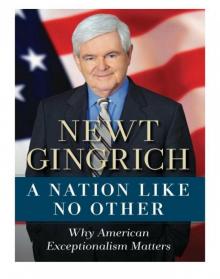 A Nation Like No Other
A Nation Like No Other To Try Men's Souls - George Washington 1
To Try Men's Souls - George Washington 1 Pearl Harbor: A Novel of December 8th
Pearl Harbor: A Novel of December 8th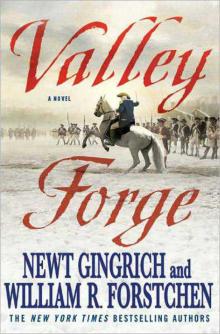 Valley Forge: George Washington and the Crucible of Victory
Valley Forge: George Washington and the Crucible of Victory To Save America
To Save America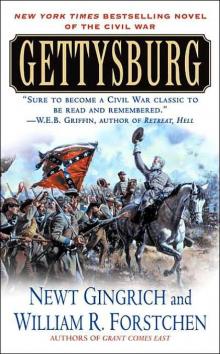 Grant Comes East cw-2
Grant Comes East cw-2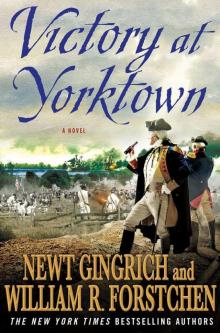 Victory at Yorktown: A Novel
Victory at Yorktown: A Novel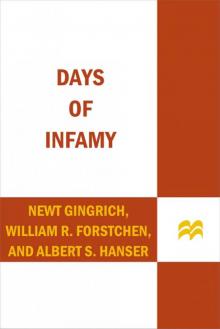 Days of Infamy
Days of Infamy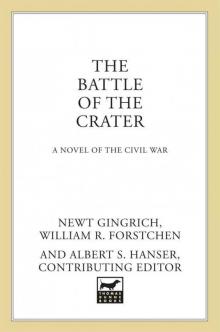 The Battle of the Crater: A Novel (George Washington Series)
The Battle of the Crater: A Novel (George Washington Series)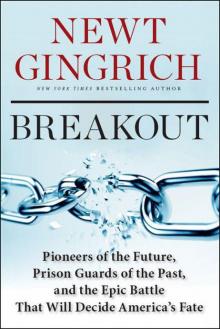 Breakout: Pioneers of the Future, Prison Guards of the Past, and the Epic Battle That Will Decide America's Fate
Breakout: Pioneers of the Future, Prison Guards of the Past, and the Epic Battle That Will Decide America's Fate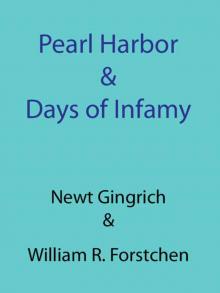 Pearl Harbour and Days of Infamy
Pearl Harbour and Days of Infamy Pearl Harbour - A novel of December 8th
Pearl Harbour - A novel of December 8th Understanding Trump
Understanding Trump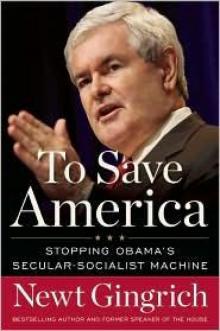 To Save America: Abolishing Obama's Socialist State and Restoring Our Unique American Way
To Save America: Abolishing Obama's Socialist State and Restoring Our Unique American Way